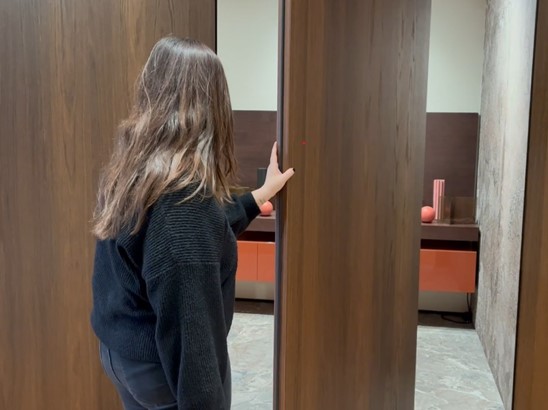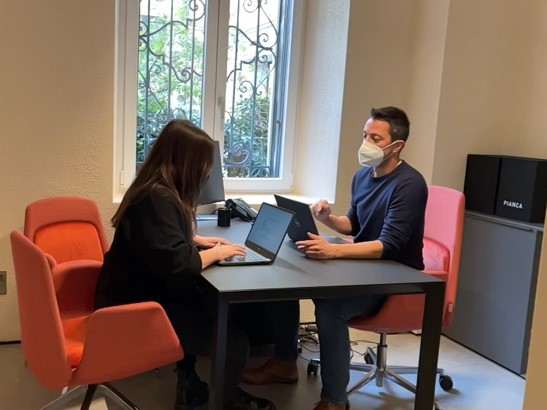Today, there is only one way to create an effective strategy: to involve people and gather their experiences, both explicit and implicit, to design valuable digital (and non-digital) experiences together. And those involved are the actual people who will interact with a company, browse its website, purchase its products, contact assistance, and live many other experiences that will determine their preference for the brand in question.
For us, every design, in the digital and physical world, is a precious opportunity to help companies improve the experiences they bring to their customers. It is by adopting this approach that Pianca, an important Italian company in the furniture systems and accessories sector, chose us as travel companions in an exciting strategic positioning project to enhance the experience of the people for whom its products are intended.
Reconnecting companies and people: what brand strategy is for us
How a brand is perceived by customers has the power to determine purchasing choices. In this sense the effectiveness of the brand experience, intended as the ability to respond to the expectations of those for whom the brand is intended, is the key element. Thus, a strategy is built by defining the most suitable levers not to attract and retain potential customers, but rather to respond to the identified needs by creating the best brand experience possible, be it physical or digital.
The strategy will therefore be based on the ability of professionals to translate the insights collected into specific choices on how to best approach the market and ensure that each activated channel, action, and message is consistent with the value proposition that the brand aims to offer its customers.
So, how to develop a strategy that is effective and that is based on customers’ actual needs and desires? For companies, it means opening up to a new way of working where the involvement and continuous listening of people – customers and stakeholders more generally – guide business decisions. In this paradigm shift, TSW is a facilitator and translator that, through places, research, skills, and technologies, allows those who provide things to reconnect with those who use them.
Our project with Pianca was born in the spirit of this approach.
TSW with Pianca: a practical example of digital branding
The collaboration with Pianca arose from the need, expressed by internal stakeholders, to work on brand awareness.
We therefore opened the doors of TSW to these representatives and welcomed them to what we called an “open place”. A designated physical spaced created to allow companies to experience reconnection with their customers. In other words, a unique opportunity to observe the experience of using a website, a product, or a service in real time, witnessing first-hand what the customer lives as they interact with the product or service.
The wealth of information collected in this phase allowed us to understand that, to support Pianca in its journey of growth, a deeper understanding of people’s needs was the first, necessary step to take.
Thanks to different research and listening methodologies, we filled this information gap and gave a face to those the brand wanted to address. First, in-depth interviews with contractors, dealers, and designers provided important insights into the experience of those who come into contact with the brand or its competitors. Subsequently, a quantitative social sampling survey allowed us to get to know current and potential customers better. Finally, the analysis of search experiences on Google and benchmarking activities completed the listening phase.
Beyond digital: measuring brand perception during in-store experiences
To provide Pianca with a complete snapshot of customers’ experiences, we beyond digital and involved people in an in-store experience to measure how this affects the brand perception.

To do so we carried out a BARTT (Brand Association Reaction Time Task), a test that allows us to evaluate (and apply scientific objectivity) the intensity of the implicit associations that people unconsciously create between a brand and certain values as a result of the experience with the product, service, and spaces with which they come into contact.
In this specific case, we conducted the test in two phases. We began by involving 40 people, measuring their perception of Pianca and other industry brands in a neutral environment. Later, the same people were accompanied to the Pianca & Partners showroom where they were free to explore the space, asking for information and touching the products. At this point, we again carried out the BARTT to verify how the in-store experience could influence the perception of certain brand values.
You can imagine how precious the obtained results were for Pianca by themselves. However, when combined with the previously collected data, the value of these deep listening activities grows exponentially, allowing us to provide a unique wealth of information that acted as the foundation for building a new brand strategy.

From listening to strategy
After the listening and measuring phase, we once again sat around the table with Pianca to co-design a value proposition capable of responding to all the needs identified during the previous phase. It is here where we summarized all the data collected into a single document, translating them into business and communication objectives, defining a cross-channel brand strategy based on real customer involvement.
This incredible project with Pianca rethinks how marketing is done – directly involving real customers to create a tomorrow where all brand experiences are useful and truly satisfying.